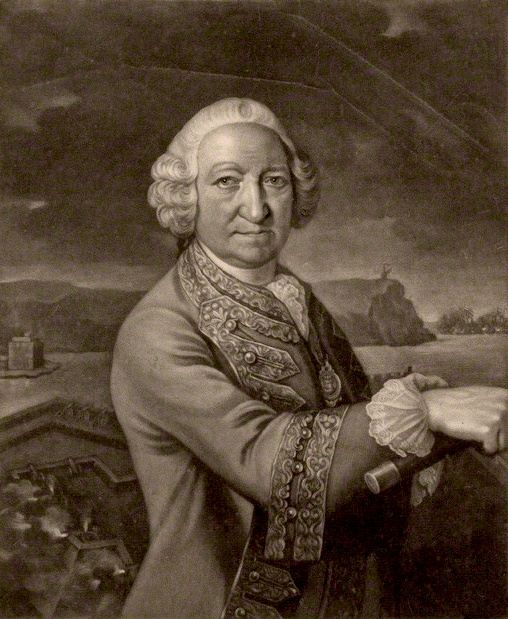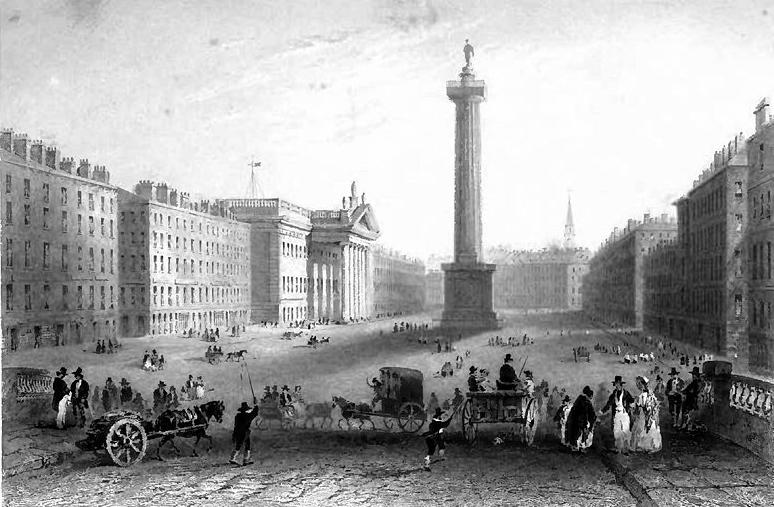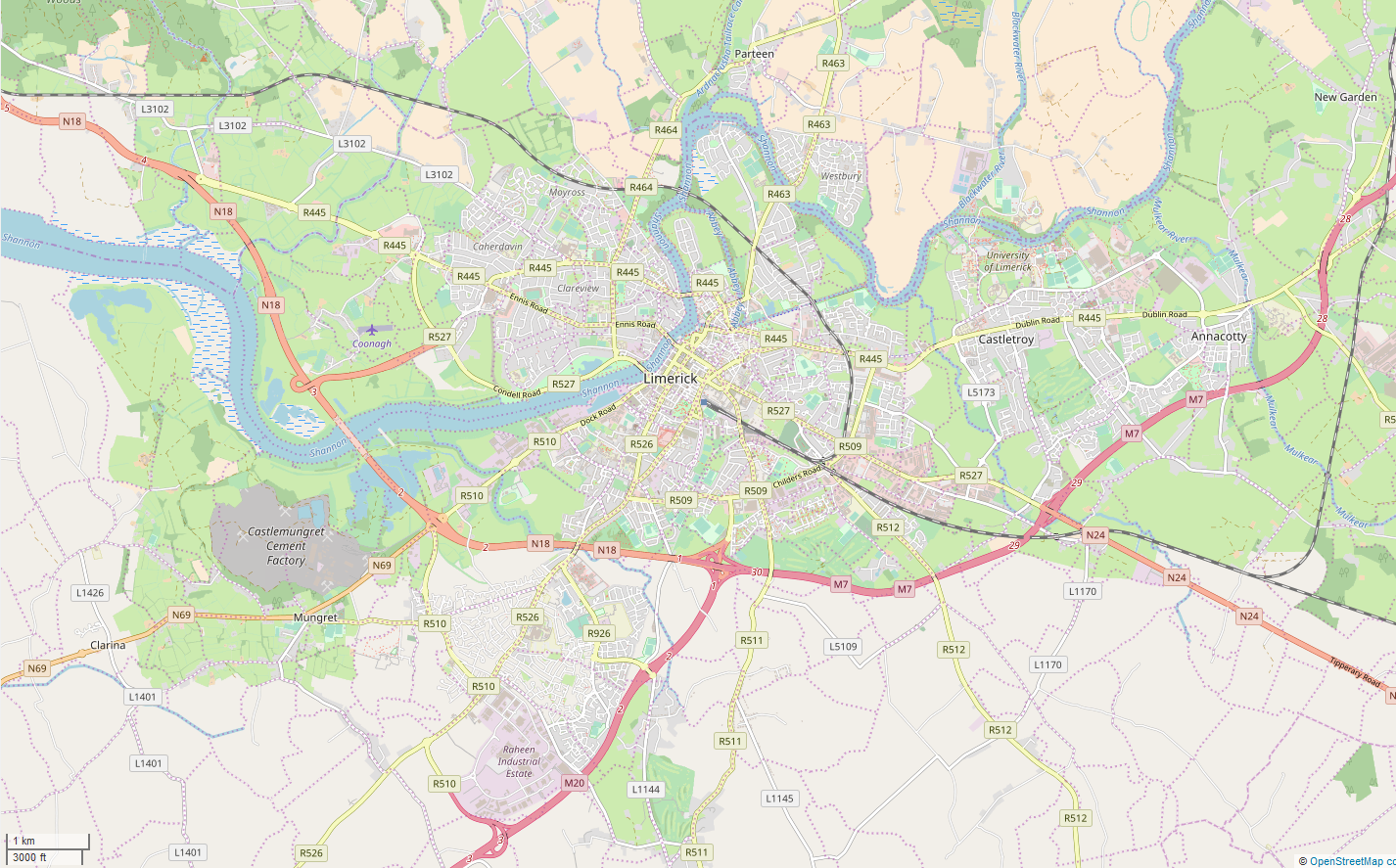|
Nelson's Pillar
Nelson's Pillar (also known as the Nelson Pillar or simply the Pillar) was a large granite column capped by a statue of Horatio Nelson, built in the centre of what was then Sackville Street (later renamed O'Connell Street) in Dublin, Ireland. Completed in 1809 when Ireland was part of the United Kingdom, it survived until March 1966, when it was severely damaged by explosives planted by Irish republicans. Its remnants were later destroyed by the Irish Army. The decision to build the monument was taken by Dublin Corporation in the euphoria following Nelson's victory at the Battle of Trafalgar in 1805. The original design by William Wilkins was greatly modified by Francis Johnston, on grounds of cost. The statue was sculpted by Thomas Kirk. From its opening on 29 October 1809 the Pillar was a popular tourist attraction, but provoked aesthetic and political controversy from the outset. A prominent city centre monument honouring an Englishman rankled as Irish nationalist senti ... [...More Info...] [...Related Items...] OR: [Wikipedia] [Google] [Baidu] |
O'Connell Street
O'Connell Street () is a street in the centre of Dublin, Ireland, running north from the River Liffey. It connects the O'Connell Bridge to the south with Parnell Street to the north and is roughly split into two sections bisected by Henry Street. The Luas tram system runs along the street. During the 17th century, it was a narrow street known as Drogheda Street, named after Henry Moore, 1st Earl of Drogheda. It was widened in the late 18th century by the Wide Streets Commission and renamed Sackville Street (''Sráid Saicfil'') after Lionel Sackville, 1st Duke of Dorset. In 1924, it was renamed in honour of nationalist leader Daniel O'Connell, whose statue by John Henry Foley stands at the lower end of the street facing O'Connell Bridge. The street has played an important part in Irish history and features several important monuments, including statues of O'Connell and trade union leader James Larkin, as well as the Spire of Dublin. It formed the backdrop to one of the ... [...More Info...] [...Related Items...] OR: [Wikipedia] [Google] [Baidu] |
Garda Síochána
(; meaning "the Guardian(s) of the Peace") is the national police and security service of Republic of Ireland, Ireland. It is more commonly referred to as the Gardaí (; "Guardians") or "the Guards". The service is headed by the Garda Commissioner, who is appointed by the Irish Government. Its headquarters are in Dublin's Phoenix Park. Since the formation of the in 1923, it has been a predominantly Police firearm use by country#Unarmed police forces, unarmed force, and more than three-quarters of the service do not routinely carry firearms. As of June 2025, the police service had 14,525 sworn members (including 302 sworn Reserve members) and 3,669 civilian staff. Operationally, the is organised into four geographical regions: the East, North/West, South and Dublin Metropolitan regions, in turn broken into divisions, districts and sub-districts. The service is the main law enforcement and security agency in the state, acting at local and national levels. Its roles include cri ... [...More Info...] [...Related Items...] OR: [Wikipedia] [Google] [Baidu] |
Siege Of Fort St Philip (1756)
The siege of Fort St Philip, also known as the siege of Minorca, took place from 20 April to 29 June 1756 during the Seven Years' War. Ceded to Great Britain in 1714 by Spain following the War of the Spanish Succession, its capture by France threatened the British naval position in the Western Mediterranean and it was returned after the Treaty of Paris (1763). Background The Spanish island of Menorca was captured by the British in 1708 during the War of the Spanish Succession and along with Gibraltar ceded to Great Britain under the 1714 Treaty of Utrecht. Although considered vital for control of the Western Mediterranean, it was also extremely vulnerable, since the Spanish deeply resented British occupation, while it was only two days sail from Cádiz, and one from the French naval base at Toulon. Attempts by William Blakeney, Lieutenant governor of Menorca and commander of the garrison of Fort St Philip, to reduce local opposition by encouraging his troops to marry local wom ... [...More Info...] [...Related Items...] OR: [Wikipedia] [Google] [Baidu] |
Limerick
Limerick ( ; ) is a city in western Ireland, in County Limerick. It is in the Provinces of Ireland, province of Munster and is in the Mid-West Region, Ireland, Mid-West which comprises part of the Southern Region, Ireland, Southern Region. With a population of 102,287 at the 2022 census of Ireland, 2022 census, Limerick is the List of urban areas in the Republic of Ireland, third-most populous urban area in Republic of Ireland, Ireland, and the List of settlements on the island of Ireland by population, fourth-most populous city on the island of Ireland. It was founded by Scandinavian settlers in 812, during the Viking Age. The city straddles the River Shannon, with the historic core of the city located on King's Island, Limerick, King's Island, which is bounded by the Shannon and Abbey River, Limerick, Abbey Rivers. Limerick is at the head of the Shannon Estuary, where the river widens before it flows into the Atlantic Ocean. Limerick City and County Council is the Local gov ... [...More Info...] [...Related Items...] OR: [Wikipedia] [Google] [Baidu] |
William Blakeney, 1st Baron Blakeney
Lieutenant-General William Blakeney, 1st Baron Blakeney, KB (7 September 1672 – 20 September 1761) was a British Army officer and politician who served from 1695 until 1756. From 1725 to 1757, he also sat in the Parliament of Ireland as MP for Kilmallock, although he rarely attended. A tough, reliable and courageous soldier, Blakeney was also known for his innovative approach to weapons drill and training. One of the few officers to bolster their reputation during the Jacobite rising of 1745, he was rewarded by being appointed Lieutenant-Governor of the British-held island of Menorca in 1748. When the Seven Years' War began in April 1756, the French occupied most of the island, although Blakeney and the garrison of Fort St. Philip held out for 70 days. Admiral John Byng was later court-martialled and shot for failing to relieve him, but Blakeney was made a baron in recognition of his resolute defence. Now over eighty years old, this ended his military career, and he retir ... [...More Info...] [...Related Items...] OR: [Wikipedia] [Google] [Baidu] |
Tristram Hunt
Tristram Julian William Hunt, (born 31 May 1974) is a British historian, broadcast journalist and former politician who has been Director of the Victoria and Albert Museum since 2017. He served as the Labour Member of Parliament (MP) for Stoke-on-Trent Central from 2010 to 2017, and Shadow Secretary of State for Education from 2013 to 2015. He has written several books, presented history programmes on television, and was a regular writer for ''The Guardian'' and ''The Observer''. Early life and education Hunt was born in Cambridge, the son of Julian Hunt, a meteorologist and leader of the Labour Party group on Cambridge City Council in 1972–73, who in 2000 was awarded a life peerage as Baron Hunt of Chesterton, and the grandson of Roland Hunt, a British diplomat. The Hunt family were goldsmiths and silversmiths in the eighteenth and nineteenth centuries; John Samuel Hunt (1785–1865) being in business with his uncle-by-marriage, Paul Storr; also descended from John Sam ... [...More Info...] [...Related Items...] OR: [Wikipedia] [Google] [Baidu] |
Parliament Of The United Kingdom
The Parliament of the United Kingdom of Great Britain and Northern Ireland is the supreme legislative body of the United Kingdom, and may also legislate for the Crown Dependencies and the British Overseas Territories. It meets at the Palace of Westminster in London. Parliament possesses legislative supremacy and thereby holds ultimate power over all other political bodies in the United Kingdom and the Overseas Territories. While Parliament is bicameral, it has three parts: the sovereign, the House of Lords, and the House of Commons. The three parts acting together to legislate may be described as the King-in-Parliament. The Crown normally acts on the advice of the prime minister, and the powers of the House of Lords are limited to only delaying legislation. The House of Commons is the elected lower chamber of Parliament, with elections to 650 single-member constituencies held at least every five years under the first-past-the-post system. By constitutional conventi ... [...More Info...] [...Related Items...] OR: [Wikipedia] [Google] [Baidu] |
Acts Of Union 1800
The Acts of Union 1800 were parallel acts of the Parliament of Great Britain and the Parliament of Ireland which united the Kingdom of Great Britain and the Kingdom of Ireland (previously in personal union) to create the United Kingdom of Great Britain and Ireland. The acts came into force between 31 December 1800 and 1 January 1801, and the merged Parliament of the United Kingdom had its first meeting on 22 January 1801. Provisions of the acts remain in force, with amendments and some Articles repealed, in the United Kingdom, but they have been repealed in their entirety in the Republic of Ireland. Name Two acts were passed in 1800 with the same long title: ''An Act for the Union of Great Britain and Ireland''. The short title of the act of the British Parliament is Union with Ireland Act 1800 ( 39 & 40 Geo. 3. c. 67), assigned by the Short Titles Act 1896. The short title of the act of the Irish Parliament is Act of Union (Ireland) 1800 (40 Geo. 3. c. 38 (I)), assigned ... [...More Info...] [...Related Items...] OR: [Wikipedia] [Google] [Baidu] |
Parliament Of Ireland
The Parliament of Ireland () was the legislature of the Lordship of Ireland, and later the Kingdom of Ireland, from 1297 until the end of 1800. It was modelled on the Parliament of England and from 1537 comprised two chambers: the Irish House of Commons, House of Commons and the Irish House of Lords, House of Lords. The Lords were members of the Peerage of Ireland, Irish peerage ('Lords Temporal, lords temporal') and Bishop, bishops ('Lords Spiritual, lords spiritual'; after the Reformation, Church of Ireland bishops). The Commons was directly elected, albeit on a very restricted Suffrage, franchise. Parliaments met at various places in Leinster and Munster, but latterly always in Dublin: in Christ Church Cathedral, Dublin, Christ Church Cathedral (15th century),Richardson 1943 p.451 Dublin Castle (to 1649), Chichester House (1661–1727), the The King's Hospital, Blue Coat School (1729–31), and finally a purpose-built Parliament House, Dublin, Parliament House on College G ... [...More Info...] [...Related Items...] OR: [Wikipedia] [Google] [Baidu] |
Lord Lieutenant Of Ireland
Lord Lieutenant of Ireland (), or more formally Lieutenant General and General Governor of Ireland, was the title of the chief governor of Ireland from the Williamite Wars of 1690 until the Partition of Ireland in 1922. This spanned the Kingdom of Ireland (1541–1800) and the United Kingdom of Great Britain and Ireland (1801–1922). The office, under its various names, was often more generally known as the Viceroy, and his wife was known as the vicereine. The government of Ireland in practice was usually in the hands of the Lord Deputy up to the 17th century, and later of the Chief Secretary for Ireland. Role The Lord Lieutenant possessed a number of overlapping roles. He was * the representative of the King (the "viceroy"); * the head of the executive in Ireland; * (on occasion) a member of the English or British Cabinet; * the fount of mercy, justice and patronage; * (on occasion) commander-in-chief in Ireland. * Grand Master of the Order of St. Patrick Prior to ... [...More Info...] [...Related Items...] OR: [Wikipedia] [Google] [Baidu] |
Lionel Sackville, 1st Duke Of Dorset
Lionel Cranfield Sackville, 1st Duke of Dorset (18 January 168810 October 1765) was a British politician who served as Lord President of the Council from 1745 to 1751. He also twice served as Lord Lieutenant of Ireland from 1730 to 1737 and again from 1750 to 1755. Life He was the son of the 6th Earl of Dorset and 1st Earl of Middlesex, and the former Lady Mary Compton, younger daughter of the 3rd Earl of Northampton. Styled Lord Buckhurst from birth, he succeeded his father as 7th Earl of Dorset and 2nd Earl of Middlesex in 1706, and was created Duke of Dorset in 1720. Perhaps because he had been on a previous diplomatic mission to Hanover, he was chosen to inform George I of his accession to the Crown in August 1714. George I initially favoured him and numerous offices and honours were given to him: Privy Councillor, Knight of the Garter, Groom of the Stole, Lord Steward, Governor of Dover Castle and Warden of the Cinque Ports. At George I's coronation he carried the ... [...More Info...] [...Related Items...] OR: [Wikipedia] [Google] [Baidu] |
Luke Gardiner
Luke Gardiner (c. 1690 – 25 September 1755) was an Irish property developer and politician. In the Irish House of Commons he represented Tralee from 1725 until 1727 and Thomastown from 1727 until his death in 1755. He was appointed to the Irish Privy Council on 2 August 1737. Early life He was possibly a son of James Gardiner of the Coombe and whose name was likely of French origin. In 1711, he married Anne Stewart. Their son Charles also served as an MP and Privy Counsellor. By 1717, he was recorded as living at Cork Hill. Career He was the senior partner in the private bank Gardiner and Hill with Arthur Hill-Trevor on Castle Street until its dissolution in 1739. During his career Gardiner acquired a wide variety of land and properties throughout Dublin city. The major continuous part, much of which he purchased from the Moore family in 1714, was a large piece of land to the East of the then established city. This estate corresponds to the modern area bounded by T ... [...More Info...] [...Related Items...] OR: [Wikipedia] [Google] [Baidu] |







